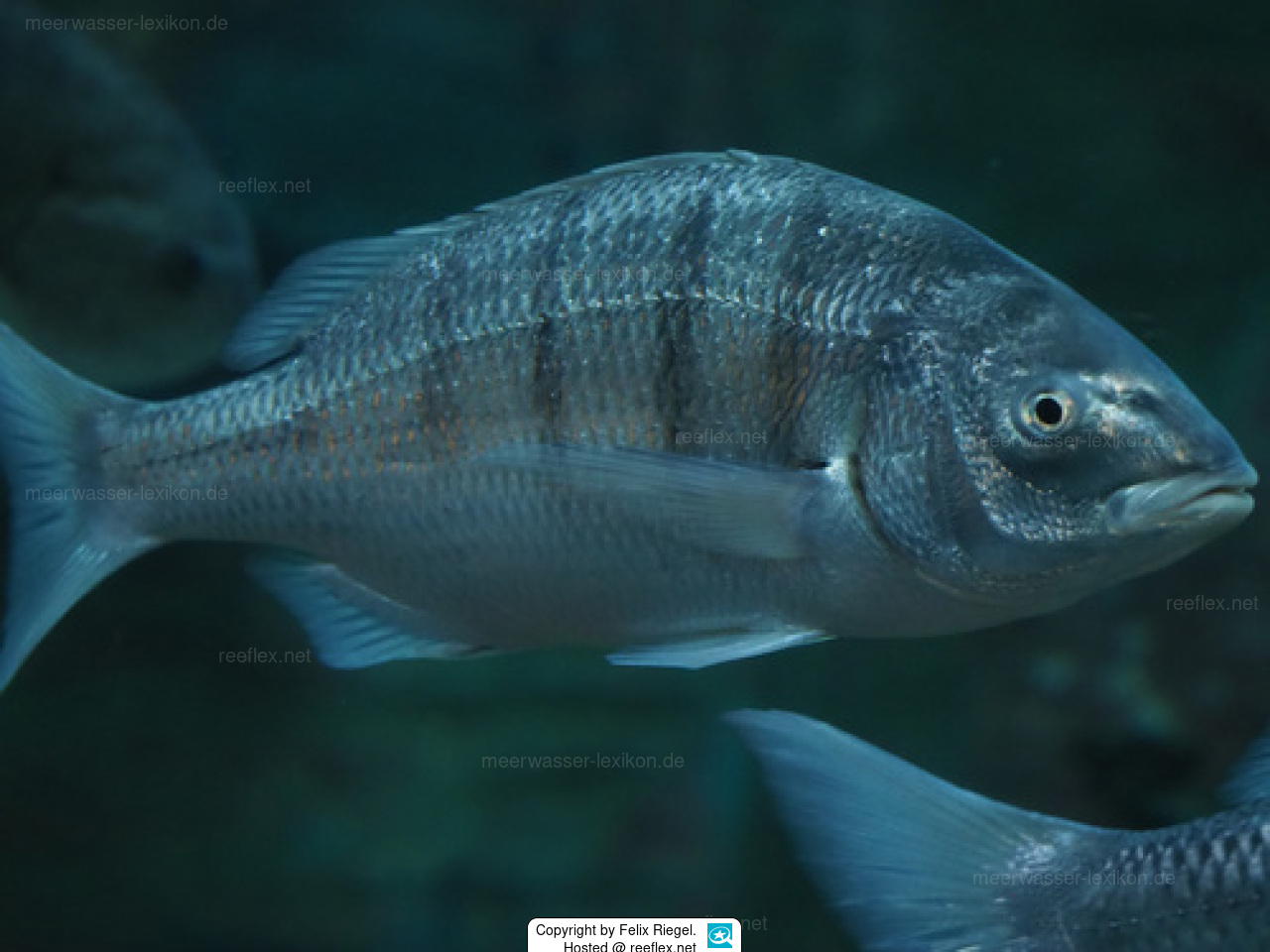Info
Lithognathus aureti is a globally little-known sea bream, but it plays a very important role in the diet of the inhabitants of Namibia in particular in its native waters.
With a maximum size of 100 cm and a weight of up to 19 kg, it is a particularly important source of protein.
The sea bream is on the Red List of Threatened Species and is classified as “increasingly endangered,” although this classification dates from 2009 and should be updated.
This classification was made because Lithognathus aureti is a sought-after target for recreational fishing, recreational anglers, and commercial line boats.
This species occurs in two distinct subgroups, a northern subpopulation and a southern subpopulation, with animals in the northern population growing up to 98 cm in length, while those in the southern population reach up to 80 cm.
Under optimal conditions, Lithognathus aureti can live to be 50 years old!
Reproduction:
Lithognathus aureti is a protandric hermaphrodite that spawns in the summer from October to February, with the main spawning season occurring from December to February (Lucks 1970, Holtzhausen 2000).
Spawning probably takes place in the surf zone along the Namibian coast (Holtzhausen 2000).
Juveniles occur in the surf zone and along sandy beaches (McLachlan 1986), while adults occur near the coast over sandy bottoms to depths of about 10 m (Holtzhausen 2000)
Spawning appears to occur during a short period in late winter on the coasts of Transkei and the Eastern Cape. Small juveniles (150 mm) live semi-resident in the surf zone of sandy and mixed coasts for about five years until they reach a length of 650 mm and begin their annual migration. In autumn and early winter, these sexually mature fish migrate eastward to the northeastern boundary of their range to spawn in late winter.
The return migration takes place in the spring, and in summer large numbers of sexually mature fish reach the southwestern cape.
The strong dependence on the estuary, the restriction of juveniles and subadults to the surf zone, the large size at sexual maturity, and the predictable aggregations of sexually mature individuals in specific areas make.
Lithognathus aureti particularly vulnerable to estuary degradation and heavy fishing.
We would like to express our sincere thanks to Felix Riegel for capturing this sea bream off Namibia on camera.
With a maximum size of 100 cm and a weight of up to 19 kg, it is a particularly important source of protein.
The sea bream is on the Red List of Threatened Species and is classified as “increasingly endangered,” although this classification dates from 2009 and should be updated.
This classification was made because Lithognathus aureti is a sought-after target for recreational fishing, recreational anglers, and commercial line boats.
This species occurs in two distinct subgroups, a northern subpopulation and a southern subpopulation, with animals in the northern population growing up to 98 cm in length, while those in the southern population reach up to 80 cm.
Under optimal conditions, Lithognathus aureti can live to be 50 years old!
Reproduction:
Lithognathus aureti is a protandric hermaphrodite that spawns in the summer from October to February, with the main spawning season occurring from December to February (Lucks 1970, Holtzhausen 2000).
Spawning probably takes place in the surf zone along the Namibian coast (Holtzhausen 2000).
Juveniles occur in the surf zone and along sandy beaches (McLachlan 1986), while adults occur near the coast over sandy bottoms to depths of about 10 m (Holtzhausen 2000)
Spawning appears to occur during a short period in late winter on the coasts of Transkei and the Eastern Cape. Small juveniles (150 mm) live semi-resident in the surf zone of sandy and mixed coasts for about five years until they reach a length of 650 mm and begin their annual migration. In autumn and early winter, these sexually mature fish migrate eastward to the northeastern boundary of their range to spawn in late winter.
The return migration takes place in the spring, and in summer large numbers of sexually mature fish reach the southwestern cape.
The strong dependence on the estuary, the restriction of juveniles and subadults to the surf zone, the large size at sexual maturity, and the predictable aggregations of sexually mature individuals in specific areas make.
Lithognathus aureti particularly vulnerable to estuary degradation and heavy fishing.
We would like to express our sincere thanks to Felix Riegel for capturing this sea bream off Namibia on camera.







 Felix Riegel, Deutschland
Felix Riegel, Deutschland



